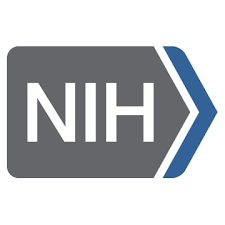HIV and the Skin
The Undiscussed Impact of HIV on the Skin
A Candid Dialogue
When we talk about the human immunodeficiency virus (HIV), the conversation often centers around its impact on the immune system and its potential to develop into Acquired Immune Deficiency Syndrome (AIDS). Less frequently discussed, but equally significant, are the skin conditions that often accompany HIV infection.
HIV, the virus that impairs the immune system, can make the body more susceptible to a wide range of skin conditions, some of which are often the first visible signs of the virus in the body. These conditions include but are not limited to, Kaposi’s sarcoma, herpes simplex and zoster, molluscum contagiosum, dermatitis, and various fungal infections.
Kaposi’s sarcoma, a cancer that manifests as purple, red, or brown tumors on the skin, is perhaps one of the most well-known HIV-related skin conditions. It is caused by the human herpesvirus 8 (HHV-8), and its prevalence is much higher among people with HIV due to their impaired immune system.
Herpes simplex and herpes zoster, causing oral or genital ulcers and shingles respectively, are also more common and may be more severe in people with HIV. Molluscum contagiosum, a virus that causes small pearly or flesh-colored bumps, is another condition that is often more widespread and difficult to treat in individuals with HIV.
Dermatitis, an inflammation of the skin that can lead to itchy, red, and swollen skin, can be a reaction to medication in people with HIV. Fungal and yeast infections, like oral thrush and seborrheic dermatitis, are also common due to the compromised immune system.
People living with HIV often experience these skin conditions more severely due to their immune system’s diminished ability to control the infections. However, antiretroviral therapy (ART), the primary treatment for HIV, helps many individuals maintain healthier immune systems and may reduce the occurrence of these conditions.
Though these skin conditions can be challenging, they are manageable with early diagnosis and appropriate treatment. Consultation with a healthcare provider or a dermatologist can provide guidance on managing these conditions and maintaining skin health while living with HIV.
While the conversation around HIV often revolves around its effect on immunity, it is essential to recognize its impact on other aspects of health, including the skin. An open dialogue about these effects can promote understanding, early diagnosis, and better care for those living with HIV.
The journey to a more confident you starts with one decision. That is the decision to get treated, why wait Book Online today? If you’re on the fence or have questions brewing, remember: We at SullivanDermatology are always here to help.Videos
HIV and the Skin
Human Immunodeficiency Virus (HIV) is a virus that targets the immune system, leaving the body vulnerable to various infections and diseases. One often overlooked aspect of HIV is its impact on the skin. HIV can cause a variety of skin issues, including rashes, dryness, and lipodystrophy, a condition characterized by abnormal fat distribution in the body.
One of the first signs of an HIV infection can be a skin rash, typically appearing within the first two weeks of exposure to the virus. This rash is usually flat, red, and may be covered with small bumps.
Chronic dryness is another symptom experienced by individuals with HIV. This condition can cause uncomfortable itchy, flaky skin, particularly on the arms and legs. Dryness can also exacerbate other skin conditions, such as eczema or psoriasis.
Lipodystrophy is a condition often associated with long-term antiretroviral therapy for HIV. It manifests as changes in body fat distribution, with fat loss (lipoatrophy) or fat gain (lipohypertrophy) in certain areas. Lipodystrophy can lead to cosmetic changes, like a gaunt face or a hump on the back and may also increase the risk of metabolic complications.
The cause of HIV is well-established: it’s transmitted through certain body fluids from a person infected with HIV. It cannot be caught through casual contact. However, the causes of skin issues in HIV patients are multifactorial. They can arise due to the virus itself, opportunistic infections, or side effects from medications. For example, the cause of lipodystrophy is believed to be related to older antiretroviral drugs, although newer medications are less likely to cause this condition.
Several myths surround HIV and its skin manifestations. One such myth is that only people with HIV experience skin changes like rashes or lipodystrophy. In reality, many other conditions can cause similar symptoms, so these are not exclusive to HIV.
Another myth is that everyone with HIV will experience lipodystrophy or other skin changes. This is not the case, as the development of these conditions depends on several factors, including the specific strain of the virus, the patient’s overall health, and their specific medication regimen.
A further myth is that all skin dryness in people with HIV is caused by the virus itself. While HIV can cause dry skin, so can various other factors, including age, environment, and other health conditions.
The treatment of skin conditions in people with HIV involves addressing the underlying HIV infection and managing individual skin symptoms. Antiretroviral therapy (ART) is the cornerstone of HIV treatment.
For individuals with HIV-associated rash, antihistamines or topical steroids may be used to manage itching and inflammation. Dryness can be treated with emollient creams and lotions, and by ensuring adequate hydration.
The management of lipodystrophy may involve changes to the patient’s HIV medication regimen, especially if older drugs are implicated. Other approaches can include dietary changes, exercise, and, in some cases, cosmetic procedures or drugs that alter fat metabolism.
To conclude, people living with HIV can experience a range of skin conditions including rash, dryness, and lipodystrophy. While these can add to the burden of living with HIV, effective treatments are available, and ongoing research continues to improve our understanding and management of these conditions. As with all health concerns, consulting a Board-Certified Dermatologist, like Dr. Sullivan for accurate diagnosis and treatment is essential.
For More Information:
HIV and the Skin or HIV and the Skin (DermNet).FAQs About HIV and the Skin
Yes, people with HIV are more susceptible to a range of skin conditions due to their impaired immune system.
Kaposi's sarcoma is a cancer that causes tumors on the skin and mucous membranes. It is more common in people with HIV.
People with HIV are more likely to have severe cases of herpes simplex and herpes zoster, causing oral or genital ulcers and shingles, respectively.
Molluscum contagiosum is a skin infection that causes small pearly or flesh-colored bumps. In people with HIV, the condition can be more widespread and harder to treat.
Yes, people with HIV can experience dermatitis, an inflammation of the skin that can lead to itchy, red, and swollen skin.
Yes, fungal and yeast infections, like oral thrush and seborrheic dermatitis, are common in people with HIV due to their compromised immune system.
The treatment for HIV-related skin conditions depends on the specific condition. It can range from topical creams to antiviral medications. Always consult a healthcare provider or a dermatologist for treatment options.
Yes, ART, the primary treatment for HIV, helps many individuals maintain healthier immune systems and may reduce the occurrence of skin conditions related to HIV.
Maintaining a healthy immune system through regular use of ART, practicing good skin hygiene, and early diagnosis and treatment of skin conditions can help prevent and manage skin conditions related to HIV.
Skin conditions are very common in people with HIV and can often be the first visible sign of the virus in the body.





